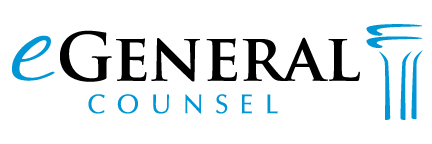 Can I set up a website to help market my company’s private placement to prospective investors? Can I send out email blasts? Advertise through Google Adsense or other online advertising? Set up a marketing program based on in-person seminars or on-line videos? What about crowdfunding portals?
Can I set up a website to help market my company’s private placement to prospective investors? Can I send out email blasts? Advertise through Google Adsense or other online advertising? Set up a marketing program based on in-person seminars or on-line videos? What about crowdfunding portals?
Traditionally, advertising and “general solicitation,” such as cold calling programs, were strictly prohibited for private placements. This was because, by definition, a private placement is a securities offering not involving a public offering, and advertising and general solicitation are the hallmarks of a public offering. This all changed in April 2012 with the passage of the Jumpstart Our Business Startups (JOBS) Act. Section 201 of the Act directed the Securities and Exchange Commission (SEC) to amend Rule 506 of Regulation D to eliminate the restriction on advertising and general solicitation for offerings to accredited investors. The SEC has adopted revisions to Regulation D to implement Section 201, which took effect in September 2013.
Title II of the Act (known as the “Capital Raising Online While Deterring Fraud and Unethical Non-Disclosure Act of 2012, ” or CROUDFUND ACT), directed the SEC to establish a regime for equity crowdfunding. Crowdfunding for securities offerings of up to $1 million will be permitted, subject to restrictions on the amount that any one person may invest. The offerings must be made through a securities broker-dealer registered with the SEC or a registered “crowdfunding portal.” The SEC has not yet issued its proposed equity crowdfunding rules, which are eagerly anticipated. These developments are discussed in a separate article on Equity Cowdfunding.
1. Advertising and General Solicitation
In a Rule 505 or 506 offering, neither the issuer nor any person acting on its behalf may offer or sell the securities by any form of general solicitation or general advertising. The same is true of Rule 504 limited offerings, except those that are registered with one or more state securities (blue sky) regulators. The Rule is based on the statutory language that a private placement under Section 4(2) of the Securities Act of 1933 (Securities Act) may not involve a public offering, and SEC interpretations and court decisions since the late 1930’s have held that a key element of the statutory exemption is the absence of general advertising and general solicitation.
General solicitation and general advertising includes (1) any advertisement, article, notice or other communication published in any newspaper, magazine, or similar media or broadcast over television or radio; and (2) any seminar or meeting whose attendees have been invited by any general solicitation or general advertising.
General Solicitation and Pre-Qualification of Investors
The SEC staff generally does not give interpretive advice on specific situations giving rise to general solicitation. However, in a few instances it has indicated that if the issuer has a pre-existing business relationship with the investors, then communications with them concerning an offering is not general solicitation. For instance, in Securities Act Release No. 33-6445, the SEC staff sated: “In analyzing what constitutes a general solicitation, the staff considered a solicitation by the general partner of a limited partnership to limited partners in other active programs sponsored by the same general partner. In determining that this did not constitute a general solicitation the [staff] underscored the existence and substance of the pre-existing business relationship between the general partner and those being solicited.” (Citing the staff’s no-action letter Woodtrails-Seattle, Ltd. (July 8, 1982)). In its Mineral Lands Research & Mktg. Inc. no-action letter (December 4, 1985), the staff stated: “In the types of relationships with offerees that may be important in establishing that a general solicitation has not taken place are those that would enable the issuer (or a person acting on its behalf) to be aware of the financial circumstances or sophistication of the persons with whom the relationship exists or that are otherwise are of some substance and duration.”
A series of staff no-action letters examined the pre-existing business relationship requirement as applied to offerings through broker-dealers who first developed lists of potential investors through general solicitations but then used pre-screening questionnaires to determine the potential investors’ suitability as accredited investors meeting the required investor sophistication and suitability standards. Only upon passing the pre-screening process were they offered securities in the private placements. In the H.B. Shaine & Co. no-action letter (May 1, 1987), the SEC Staff agreed that this procedure did not constitute general solicitation.
Pre-Qualification over the Internet
In IPONet (July 26, 1996), the staff approved a variation on this fact pattern in which potential investors with no prior business relationship to a broker dealer could register on a website affiliated with the broker dealer. If approved after answering a questionnaire designed to determine that the prospective investor was accredited and sophisticated, the investor was granted access to the private placement offering materials on a password-protected web page. And in Lamp Technologies, Inc. (May 29,1997), the staff approved an Internet matchmaking service that offered investments through password-protected pages to members who passed a similar pre-screening process.
Since these no-action letters all involved registered securities broker-dealers, it was unclear if a non-broker-dealer third party could provide similar matchmaking services over the Internet. In Securities Act Release No. 33-7856 (April 28, 2000), the staff expressed concern about Internet matchmaking sites that are not affiliated with registered broker-dealers, noting that “traditional broker-dealer relationships require that a broker-dealer deal fairly with, and make suitable recommendations to, customers, and, thus, implies that a substantive relationship exists between the broker-dealer and its customers.” The staff also expressed concerns about sites where the prospective investor did not have to fill out a pre-screening questionnaire but only had to certify that they were accredited. However, the staff did not rule out these practices, and only affirmed that the absence or presence of general solicitation is always dependent on the facts and circumstances of each particular case. “Thus, there may be facts and circumstances in which a third party, other than a registered broker dealer, could establish a ‘pre-existing, substantive relationship’ sufficient to avoid a ‘general solicitation.’”
The JOBS Act: General Solicitation and General Advertising Permitted in Rule 506 Offerings to Accredited Investors
Title II of the JOBS Act implemented the first significant relaxation on the prohibition on general advertising and general solicitation since the adoption of the Securities Act in 1933, by allowing general advertising and general solicitation in Rule 506 offerings to accredited investors. The Act directed the SEC to revise Rule 506 within 90 days of the JOBS Act’s enactment to allow general advertising and general solicitation in Rule 506 offerings to accredited investors, and to “ require the issuer to take reasonable steps to verify the purchasers of the securities are accredited investors, using such methods as determined by the [SEC].”
The Proposed Rules
The SEC missed the 90-day deadline, issuing proposed rules on August 29, 2013. (Securities Act Release No. 33-9354).
Despite the directive of the JOBS Act, the proposed rules did not elaborate on the specific steps that the issuer must take that will be considered to be “reasonable steps to verify the purchasers of the securities are accredited investors.” The Release did state, however, that whether the steps taken are “reasonable” is an objective determination, based on the particular facts and circumstances of each transaction, and gave several examples, including (1) the nature of the purchaser and the type of accredited investor that the purchaser claims to be, (2) the amount and type of information that the issuer has about the purchaser, and (3) the nature of the offering, such as the manner in which the purchaser was solicited to participate in, and the terms of, the offering, such as a minimum investment amount.
The Release stated that the amount and type of information that an issuer has about a purchaser would be a significant factor in determining what additional steps would be reasonable to verify the purchaser’s accredited investor status, and that the more information an issuer has indicating that a prospective purchaser is an accredited investor, the fewer steps it would have to take, and vice versa.
The Release also states that the nature of the offering, such as the means through which the issuer publicly solicits purchasers, may be relevant in determining the reasonableness of the steps taken to verify accredited investor status:
“An issuer that solicits new investors through a website accessible to the general public or through a widely disseminated email or social media solicitation would likely be obligated to take greater measures to verify accredited investor status than an issuer that solicits new investors from a database of prescreened accredited investors created and maintained by a reasonably reliable third-party, such as a registered broker-dealer. In the case of the former, we do not believe that an issuer would have taken reasonable steps to verify accredited investor status if it required only that a person checking a box in a questionnaire or sign a form, absent other information about the purchaser indicating accredited investor status. In the case of the latter, we believe an issuer would be entitled to rely on a third party that has verified a person’s status as an accredited investor, provided that the issuer has a reasonable basis to rely on such third-party verification.”
Other factors include the purchaser’s ability to meet a high minimum investment amount: “By way of example, the ability of a purchaser to satisfy a minimum investment amount requirement that is sufficiently high such that only accredited investors could reasonably be expected to meet it, with a direct cash investment that is not financed by the issuer or by any other third party, could be taken into consideration in verifying accredited investor status.”
Finally, the Release confirmed the continued applicability of the provision in the definition of accredited investor in Rule 501(a) that includes persons that the issuer reasonably believes comes within one of the categories of accredited investors enumerated in the Rule.
The Final Rules
The SEC adopted final rules on July 10, 2013, effective September 10, 2013. Securities Act Release No. 33-9415 (July 10, 2013). In general, the final rules follow the proposed rules. One major change was the addition of a detailed non-exclusive and non-mandatory list of methods that issuers may use to verify the accredited investor status of natural persons. A separate article discussed these and other aspects of the final rules implementing the JOBS Act’s provisions on general solicitation in Rule 506 offerings to accredited investors.
2. Exemption From Broker-Dealer Registration Requirements
The JOBS Act also provides a limited exemption from the applicability of the broker-dealer registration provisions of Section 15 of the Securities and Exchange Act of 1934 (Exchange Act) for certain activities related to Rule 506 offerings. The exemption applies to persons coming within one of the three following categories: (A) such person and each person associated with that person receives no compensation in connection with the purchase or sale of such security; (B) such person and each person associated with that person does not have possession of customer funds or securities in connection with the purchase or sale of such security; and (C) such person is not subject to a statutory disqualification as defined in section 3(a)(39) of the Exchange Act and does not have any person associated with that person subject to such a statutory disqualification.
Under the JOBS Act, with respect to securities offered and sold in compliance with Rule 506, no person who meets the conditions set forth above will be subject to registration as a broker or dealer pursuant to section 15(a)(1) of the Exchange Act, solely because (A) that person maintains a platform or mechanism that permits the offer, sale, purchase, or negotiation of or with respect to securities, or permits general solicitations, general advertisements, or similar or related activities by issuers of such securities, whether online, in person, or through any other means; (B) that person or any person associated with that person co-invests in such securities; or (C) that person or any person associated with that person provides “ancillary services” with respect to such securities. Ancillary services means: (1) the provision of due diligence services, in connection with the offer, sale, purchase, or negotiation of such security, so long as such services do not include, for separate compensation, investment advice or recommendations to issuers or investors; and (B) the provision of standardized documents to the issuers and investors, so long as such person or entity does not negotiate the terms of the issuance for and on behalf of third parties and issuers are not required to use the standardized documents as a condition of using the service.
3. Maximum Number of Shareholders
Finally, Section 501 of the JOBS Act increased the threshold for requiring a company to register under Section 12(g) of the Exchange Act, which was previously set at 500 holders of record. Now, registration is not required until 120 days after the last day of the issuer’s first fiscal year ended on which it has total assets exceeding $10,000,000 and a class of equity security (other than an exempted security) held of record by either (i) 2,000 persons, or (ii) 500 persons who are not accredited investors. Section 502 of the Act also added a provision stating that the definition of “held of record” shall not include securities held by persons who received the securities pursuant to an employee compensation plan in transactions exempted from the registration requirements of Section 5 of the Securities Act. And Section 303 of the Act directed the SEC to adopt rules that exempt, conditionally or unconditionally, securities acquired pursuant to an offering made under the crowdfunding provisions from registration under Section 12(g) of the Exchange Act.
The upshot is that Exchange Act registration will not be required until the issuer has 2,000 holders of record or 500 unaccredited holders of record, excluding qualifying employee securities and securities sold in exempt crowdfunding offerings.

